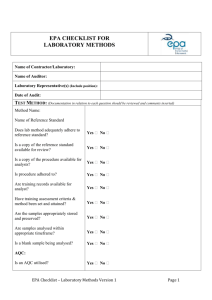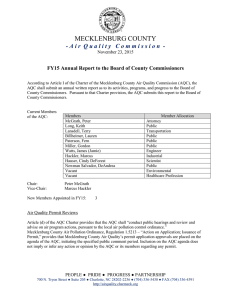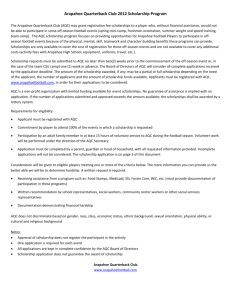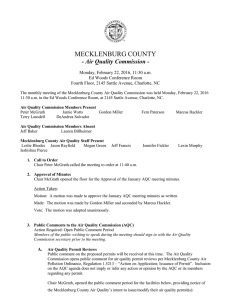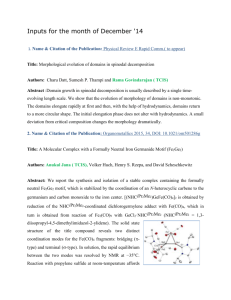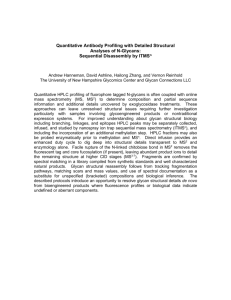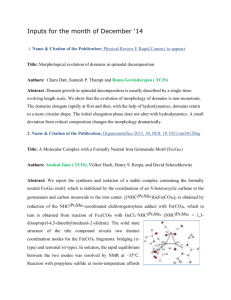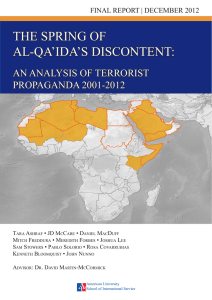Supplementary Figure Legends - Word file
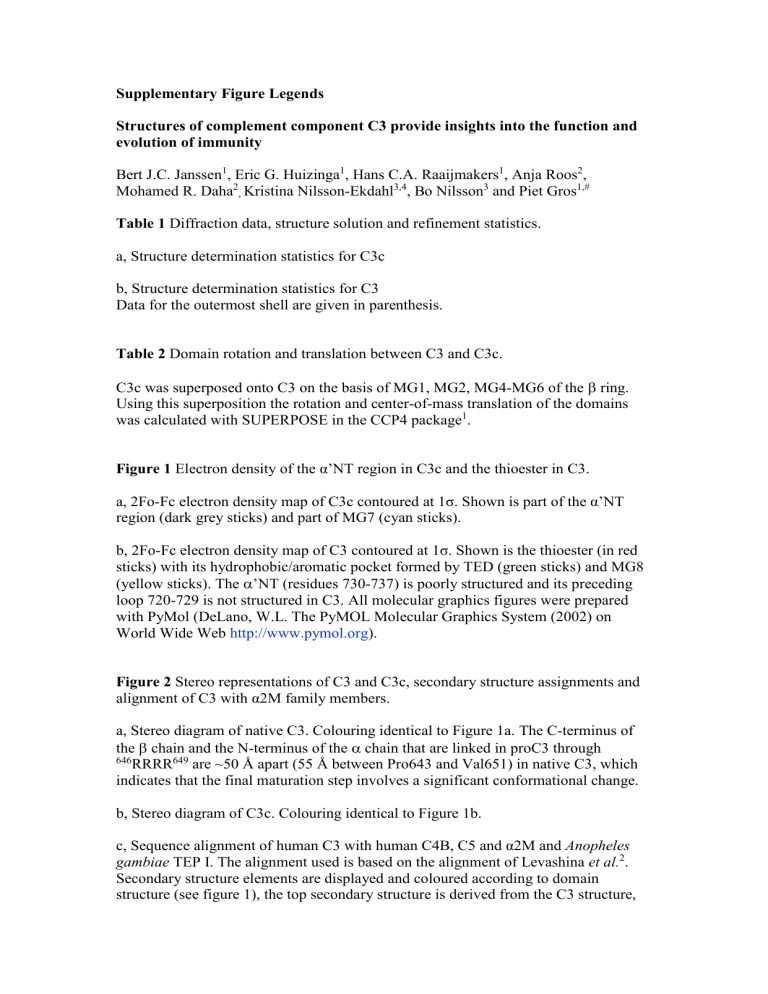
Supplementary Figure Legends
Structures of complement component C3 provide insights into the function and evolution of immunity
Bert J.C. Janssen 1 , Eric G. Huizinga 1 , Hans C.A. Raaijmakers 1 , Anja Roos 2 ,
Mohamed R. Daha
2
,
Kristina Nilsson-Ekdahl
3,4
, Bo Nilsson
3
and Piet Gros
1,#
Table 1 Diffraction data, structure solution and refinement statistics. a, Structure determination statistics for C3c b, Structure determination statistics for C3
Data for the outermost shell are given in parenthesis.
Table 2 Domain rotation and translation between C3 and C3c.
C3c was superposed onto C3 on the basis of MG1, MG2, MG4-MG6 of the
ring.
Using this superposition the rotation and center-of-mass translation of the domains was calculated with SUPERPOSE in the CCP4 package
1
.
Figure 1 Electron density of the α’NT region in C3c and the thioester in C3. a, 2Fo-Fc electron density map of C3c contoured at 1σ. Shown is part of the α’NT region (dark grey sticks) and part of MG7 (cyan sticks). b, 2Fo-Fc electron density map of C3 contoured at 1σ. Shown is the thioester (in red sticks) with its hydrophobic/aromatic pocket formed by TED (green sticks) and MG8
(yellow sticks). The
’NT (residues 730-737) is poorly structured and its preceding loop 720-729 is not structured in C3. All molecular graphics figures were prepared with PyMol (DeLano, W.L. The PyMOL Molecular Graphics System (2002) on
World Wide Web http://www.pymol.org
).
Figure 2 Stereo representations of C3 and C3c, secondary structure assignments and alignment of C3 with α2M family members. a, Stereo diagram of native C3. Colouring identical to Figure 1a. The C-terminus of the
chain and the N-terminus of the
chain that are linked in proC3 through
646
RRRR
649
are ~50 Å apart (55 Å between Pro643 and Val651) in native C3, which indicates that the final maturation step involves a significant conformational change. b, Stereo diagram of C3c. Colouring identical to Figure 1b. c, Sequence alignment of human C3 with human C4B, C5 and α2M and Anopheles gambiae TEP I. The alignment used is based on the alignment of Levashina et al.
2
.
Secondary structure elements are displayed and coloured according to domain structure (see figure 1), the top secondary structure is derived from the C3 structure,
the one below that from the structures of C3c, C3d
3
and C3a
4
. Secondary structure labels for the eight MG domains are according to standard nomenclature of fibronection-type 3 and immunoglobulin domains 5 . Nomenclature for ANA is according to Zhang et al .
6
; for TED it is adopted from Aleshin et al.
7
; for CUB adopted from Feinberg et al.
8
; and, for C345C according to Bramham et al.
9
. C3 thioester residues (Cys988 and Gln991) are labelled red. C3 residues involved in formation of the acylimidazole intermediate (His1104 and Glu1106) are green. C3 residues forming the hydrophobic/aromatic pocket for thioester protection are yellow.
Acidic C3 residues involved in binding factor B and H and CR1 are purple. Figure was prepared with ESPript
10
. d, Structure-based sequence alignment of the eight MG domains. No sequence homology is apparent between the domains. β strands are coloured cyan. Secondary structure labels for the eight MG domains are according to standard nomenclature of fibronection-type 3 and immunoglobulin domains
5
. In this figure MG6
and MG6 have been merged into one MG6 domain (hypothetical numbering starting at MG6
and continuing with MG6
is given). e, Superposition of the eight MG domains of C3. A rainbow ramp color-coding from blue to red is used for the chain trace from N- to C-terminus. Dashed line in the topology diagram shows the separation between the two β sheets of the MG domains.
Figure 3 Structures of individual domains.
Shown are superposed protein domains and structural features of C3 (blue) and C3c
(yellow) in ribbon representation. Glycans are shown in stick representation and disulphide bridges in ball-and-stick representation (with sulphurs shown in orange). a, MG1 with first two GlcNac’s of the glycan moiety on Asn63; b, MG2; c, MG3; d, MG4; e, MG5; f, MG6
with MG6
for both C3 and C3c shown in light grey; g, LNK; h, ANA of C3 with C3a
4
shown in green; i, MG6
with MG6
for both C3 and C3c shown in light grey; j, MG7; k, CUB g
with CUB f
shown in light grey, first two GlcNac’s and first three mannoses of the glycan moiety on Asn917 in stick representation; m, TED from C3 with C3d 3 in orange; n, CUB f
with CUB g
in light grey, carbohydrate not shown; p, MG8 of C3 (blue) and C3c (yellow) with RBD
11
of
2M (red); q, anchor; and, r, C345C of C3 (blue) and C3c (yellow) with C345C of C5
9
(cyan).
Figure 4 Electrostatic surface potential of C3 and C3c.
Electrostatic surface potentials (red for negative, blue for positive) shown between –
12 and +12 kT. The figure illustrates the dipole-like charge distribution of both C3 and C3c. Figure was prepared with GRASP 12 .
Figure 5 Sequence conservation of the
bridge,
205
YVLP
208
, and the hinge
745 FPES 748 .
A rainbow ramp color-coding was used from blue for well conserved residues to red for not-conserved residues, based on the alignment from Levashina et al.
2 . Figure is produced using the consurf website http://consurf-hssp.tau.ac.il
13
.
Figure 6 Conglutinin binding site. a, The glycan on Asn917 is positioned on the CUB domain. Shown are domains in ribbon representation with colours according to Figure 1 and the glycan moiety in stick representation coloured yellow. The glycan was implicated in folding and correctly predicted to be concealed
14
. The concealed nature explains why conglutinin cannot bind to C3
15
. b, Inactivation of C3b to iC3b by factor I cleavages occur in the CUB domain. First two cleavages at Arg1281-Ser1282 and Arg1298-Ser1299
16 (indicated in the figure by
1 and 2, respectively) allow conglutinin binding at glycan Asn917. The third cleavage at
Arg932-Glu933
17 (indicated in the figure by 3) results in the cleavage of iC3b into
C3dg and C3c.
1.
2.
3.
The CCP4 suite: programs for protein crystallography. Acta Crystallogr D
Biol Crystallogr 50 , 760-3 (1994).
Levashina, E. A. et al. Conserved role of a complement-like protein in phagocytosis revealed by dsRNA knockout in cultured cells of the mosquito,
Anopheles gambiae. Cell 104 , 709-18 (2001).
Nagar, B., Jones, R. G., Diefenbach, R. J., Isenman, D. E. & Rini, J. M. X-ray crystal structure of C3d: a C3 fragment and ligand for complement receptor 2.
4.
5.
6.
Science 280 , 1277-81 (1998).
Huber, R., Scholze, H., Paques, E. P. & Deisenhofer, J. Crystal structure analysis and molecular model of human C3a anaphylatoxin. Hoppe Seylers Z
Physiol Chem 361 , 1389-99 (1980).
Branden, C. & Tooze, J. in Introduction to Protein Structure 299-323
(Garland Publishing, Inc., New York, 1991).
Zhang, X., Boyar, W., Toth, M. J., Wennogle, L. & Gonnella, N. C. Structural
7.
8. definition of the C5a C terminus by two-dimensional nuclear magnetic resonance spectroscopy. Proteins 28 , 261-7 (1997).
Aleshin, A., Golubev, A., Firsov, L. M. & Honzatko, R. B. Crystal structure of glucoamylase from Aspergillus awamori var. X100 to 2.2-A resolution. J Biol
Chem 267 , 19291-8 (1992).
Feinberg, H. et al. Crystal structure of the CUB1-EGF-CUB2 region of mannose-binding protein associated serine protease-2. Embo J 22 , 2348-59
(2003).
9. Bramham, J. et al. Functional insights from the structure of the multifunctional
C345C domain of C5 of complement. J Biol Chem 280 , 10636-45 (2005).
10. Gouet, P., Courcelle, E., Stuart, D. I. & Metoz, F. ESPript: analysis of multiple sequence alignments in PostScript. Bioinformatics 15 , 305-8 (1999).
11. Jenner, L., Husted, L., Thirup, S., Sottrup-Jensen, L. & Nyborg, J. Crystal structure of the receptor-binding domain of alpha 2-macroglobulin. Structure
6 , 595-604 (1998).
12. Nicholls, A., Bharadwaj, R. & Honig, B. GRASP: Graphical representation and analysis of suface properties. Biophys. J.
64 , 166-170 (1993).
13. Glaser, F., Rosenberg, Y., Kessel, A., Pupko, T. & Ben-Tal, N. The ConSurf-
HSSP database: the mapping of evolutionary conservation among homologs onto PDB structures. Proteins 58 , 610-7 (2005).
14. Crispin, M. D. et al. Monoglucosylated glycans in the secreted human complement component C3: implications for protein biosynthesis and structure. FEBS Lett 566 , 270-4 (2004).
15. Hirani, S., Lambris, J. D. & Muller-Eberhard, H. J. Localization of the conglutinin binding site on the third component of human complement. J
Immunol 134 , 1105-9 (1985).
16. Harrison, R. A. & Lachmann, P. J. Novel cleavage products of the third component of human complement. Mol Immunol 17 , 219-28 (1980).
17. Lachmann, P. J., Pangburn, M. K. & Oldroyd, R. G. Breakdown of C3 after complement activation. Identification of a new fragment C3g, using monoclonal antibodies. J Exp Med 156 , 205-16 (1982).
